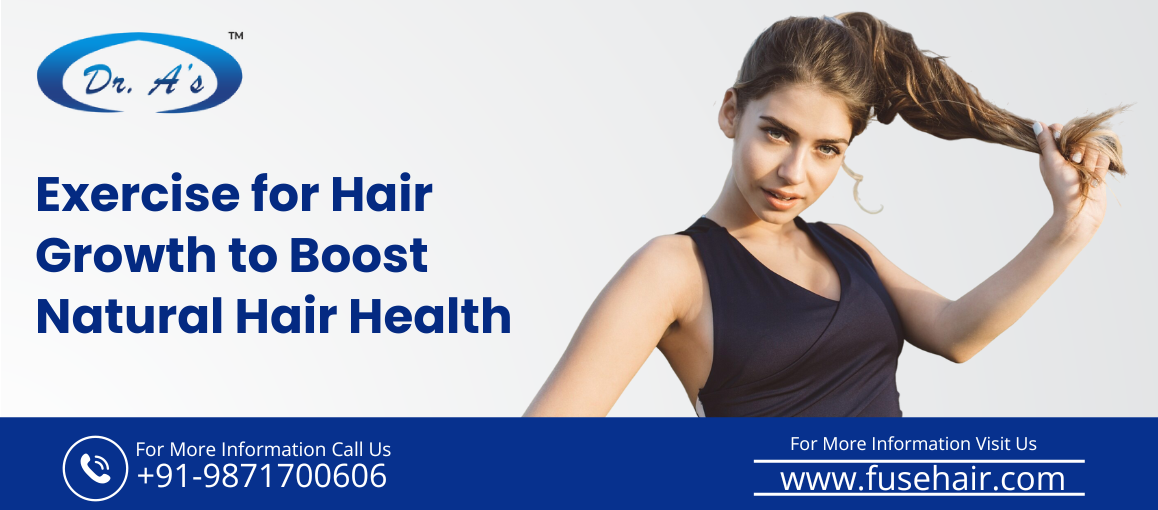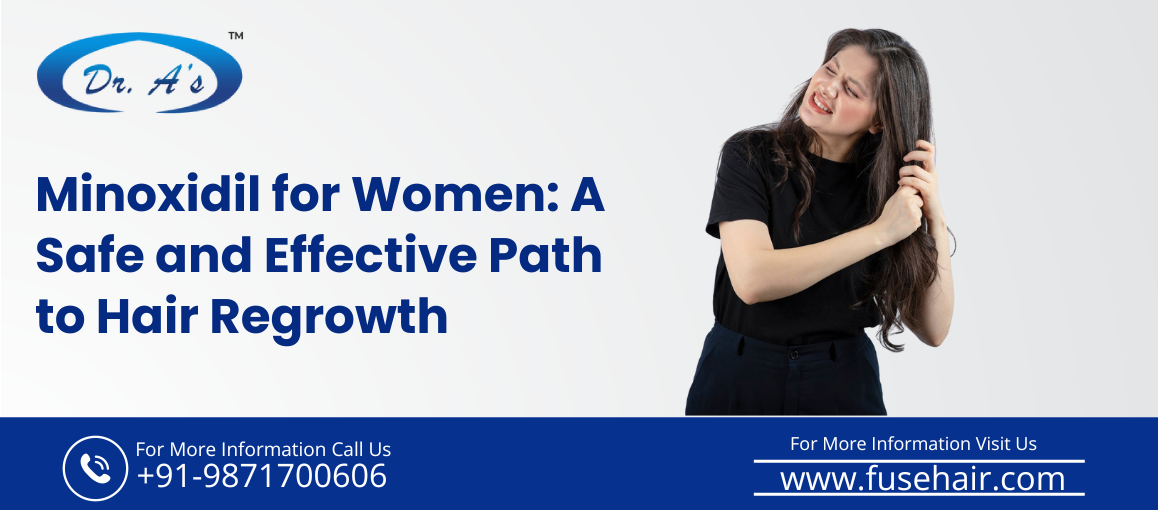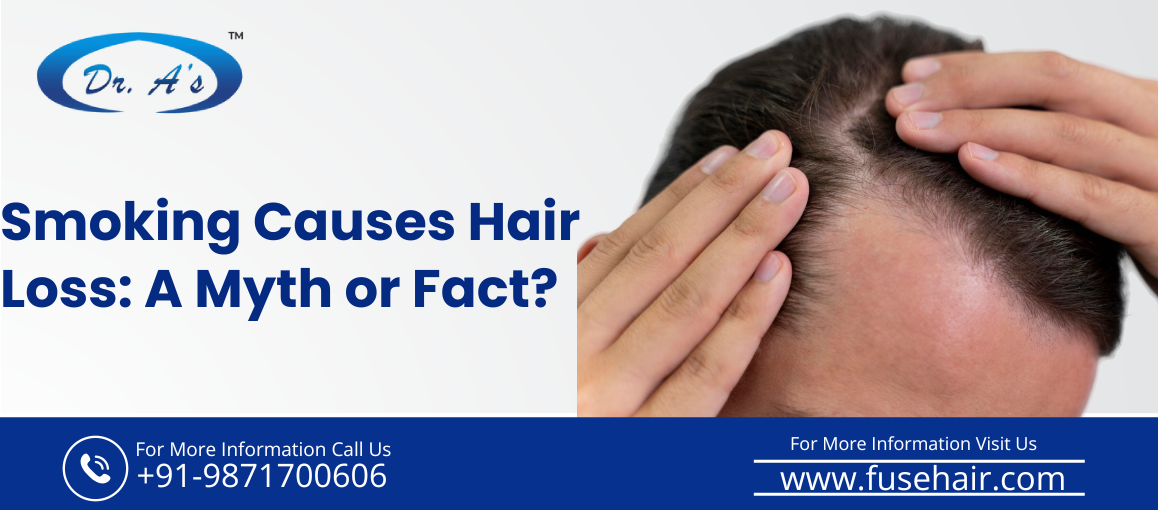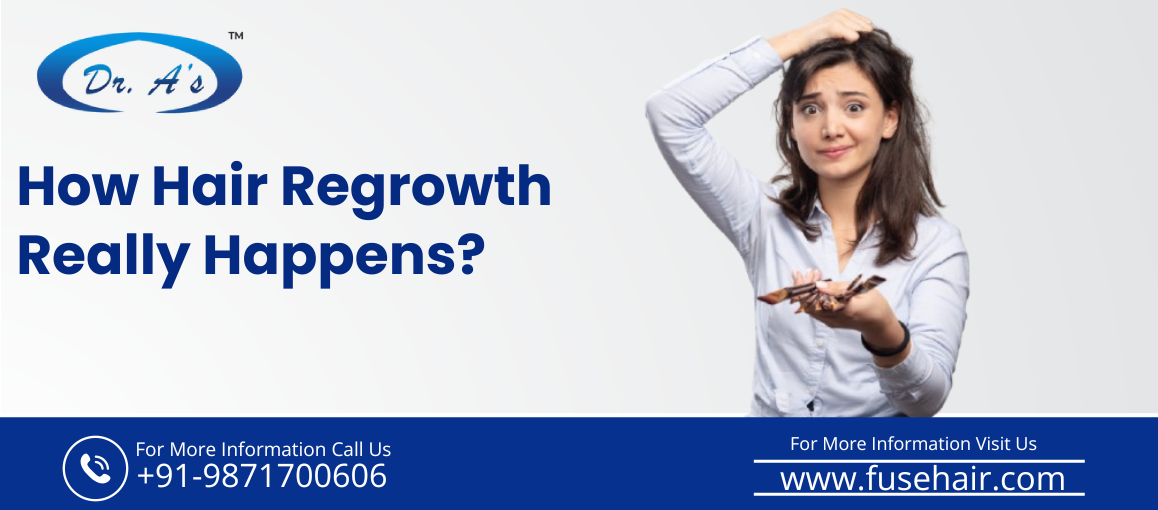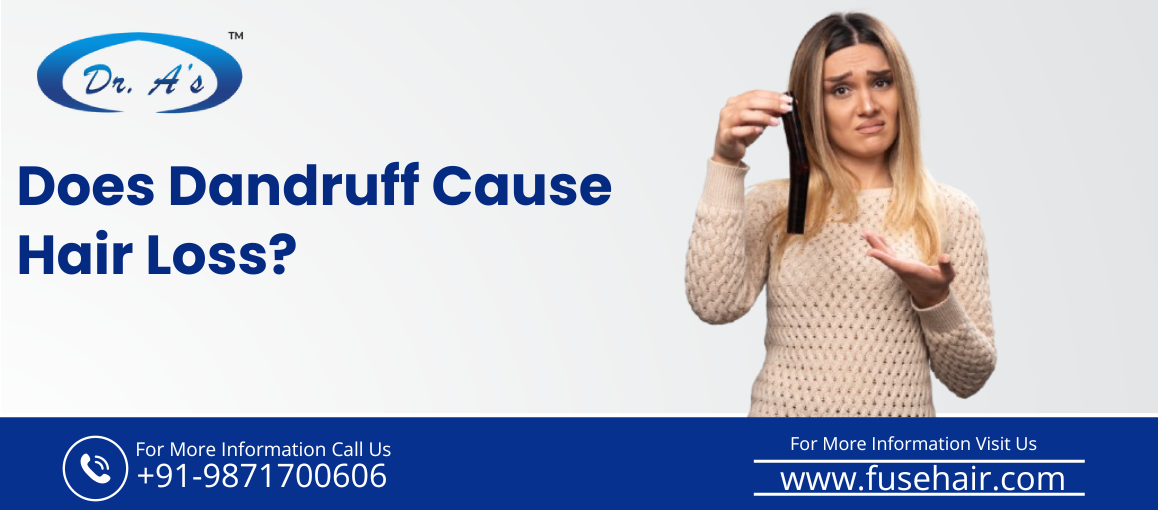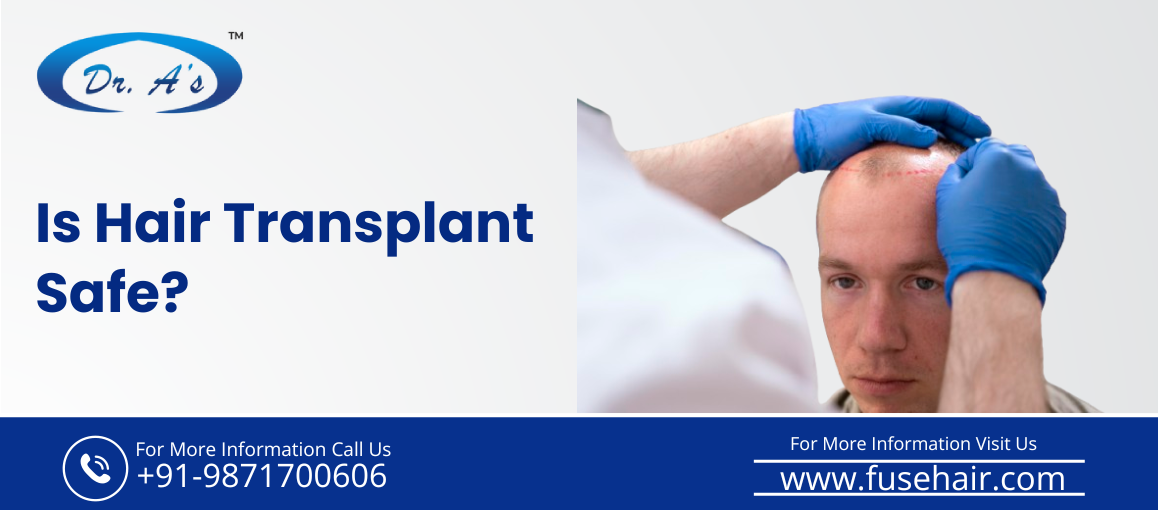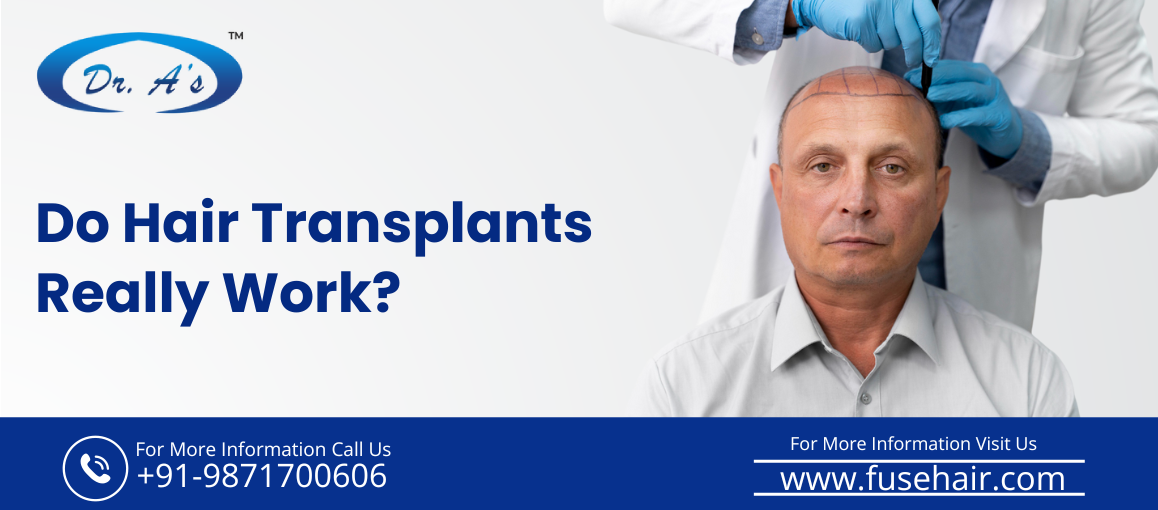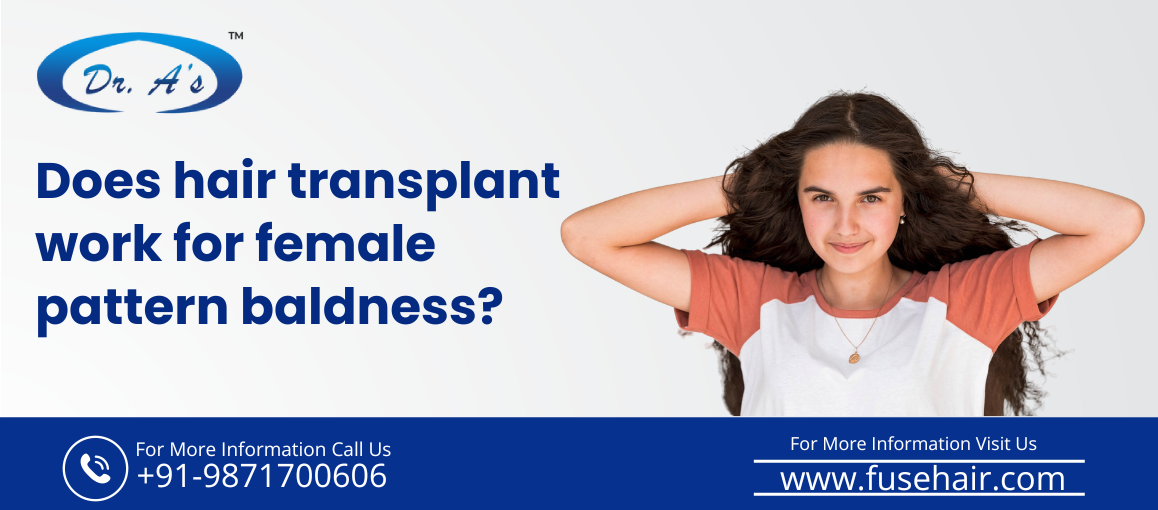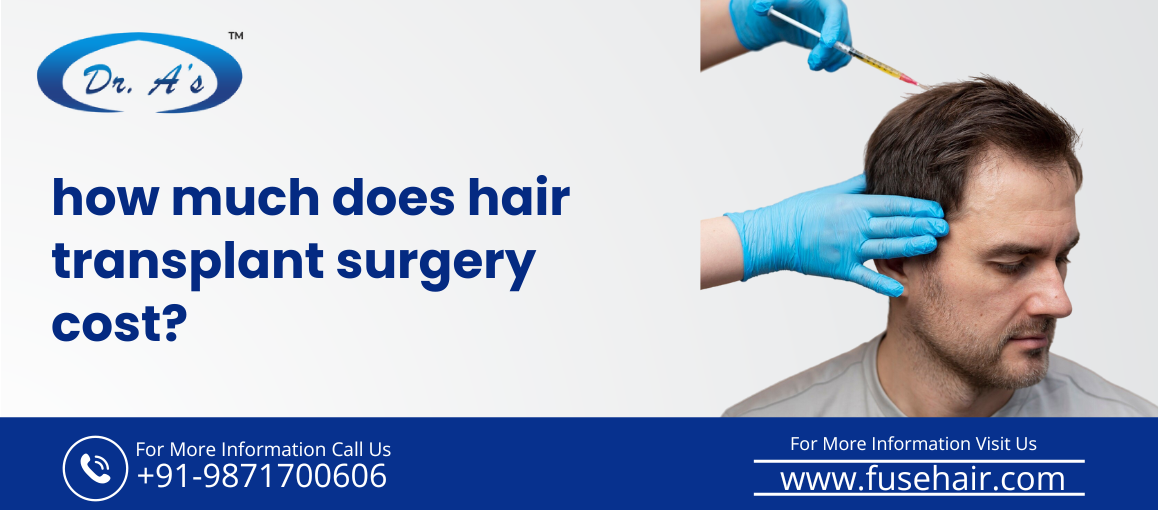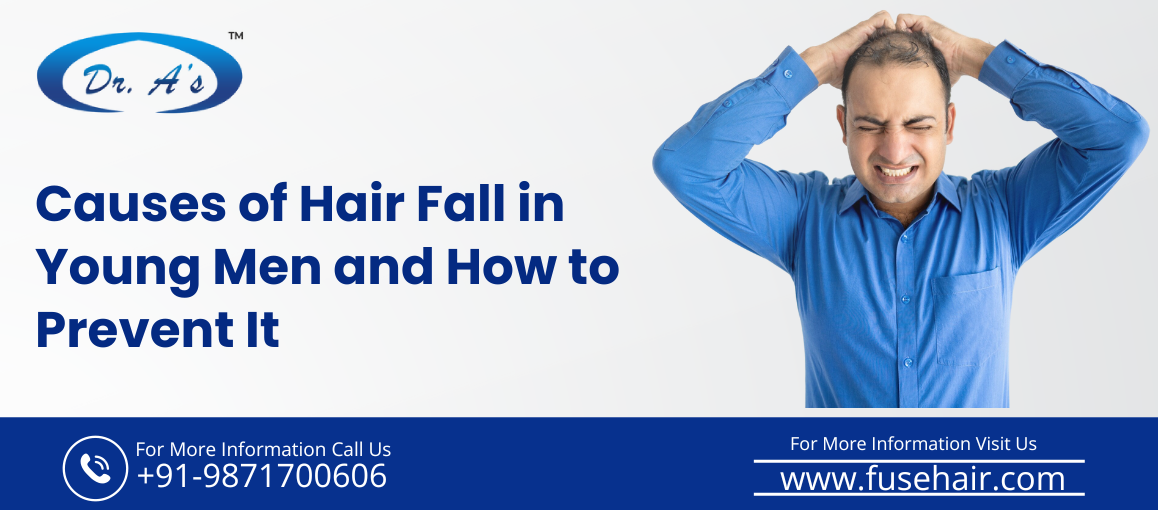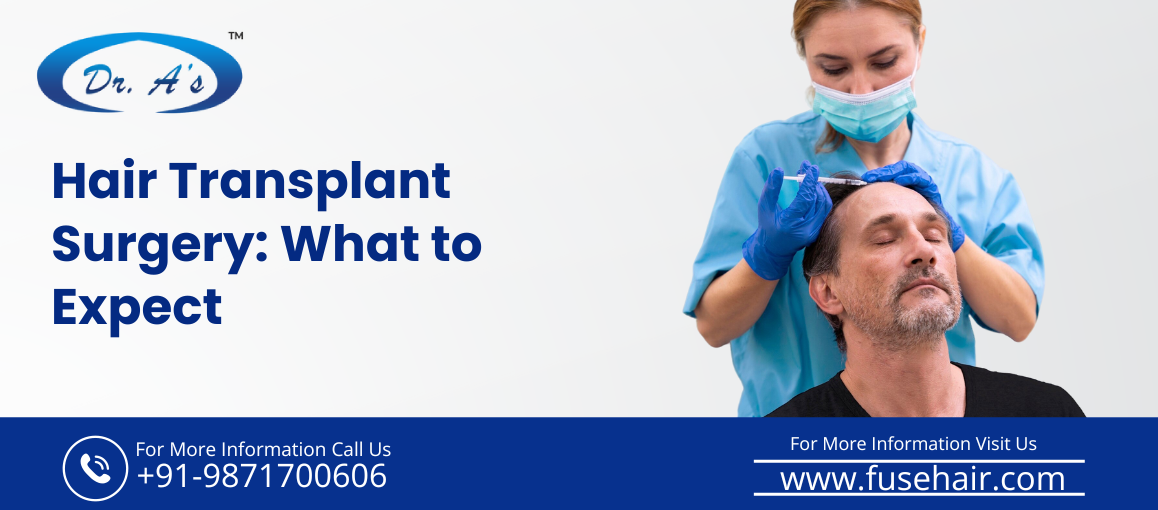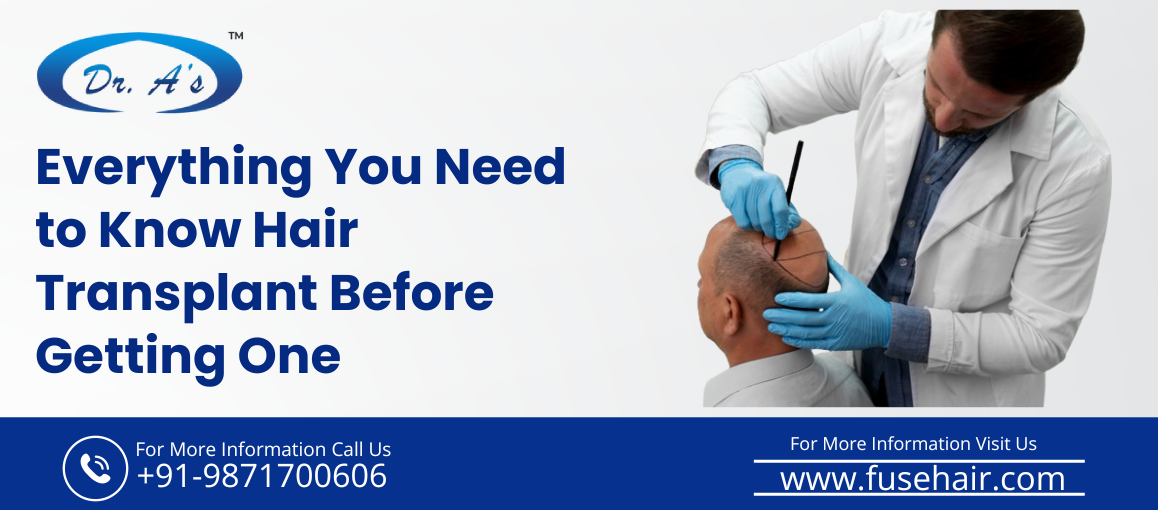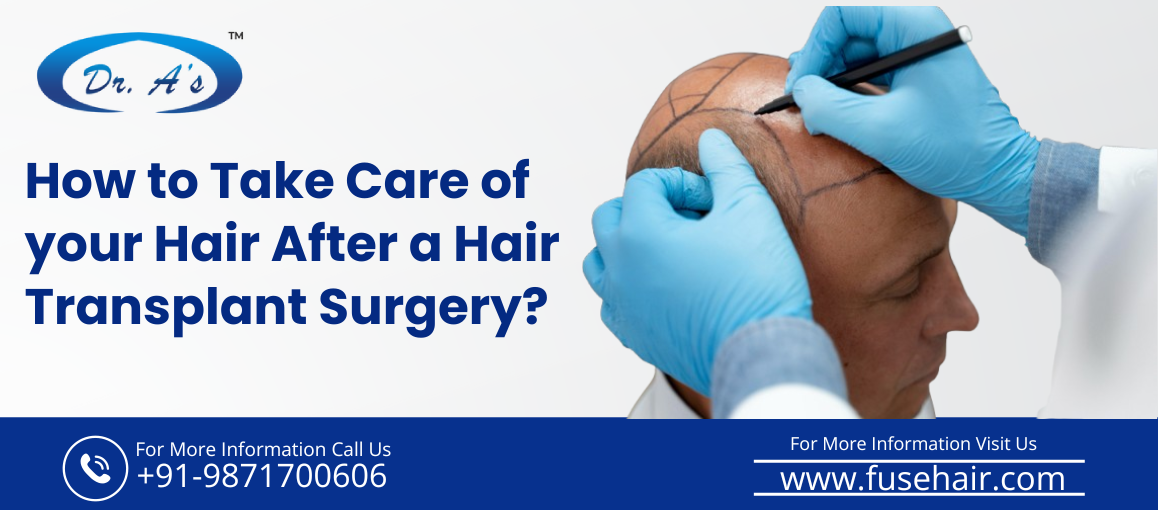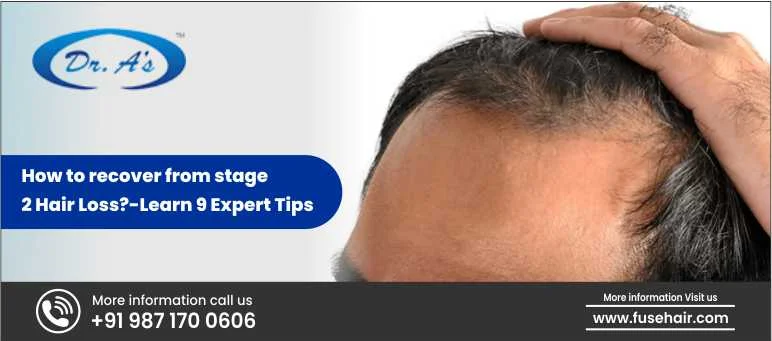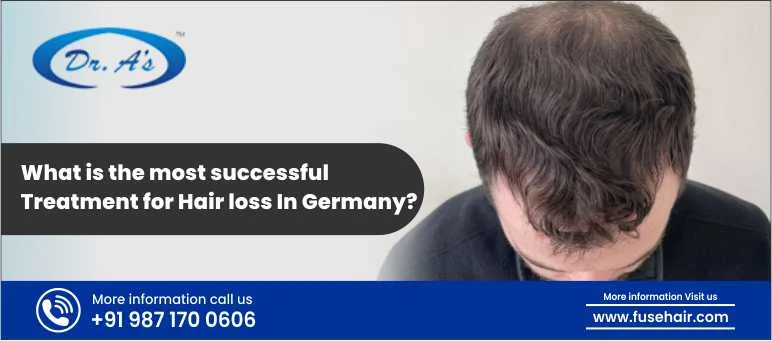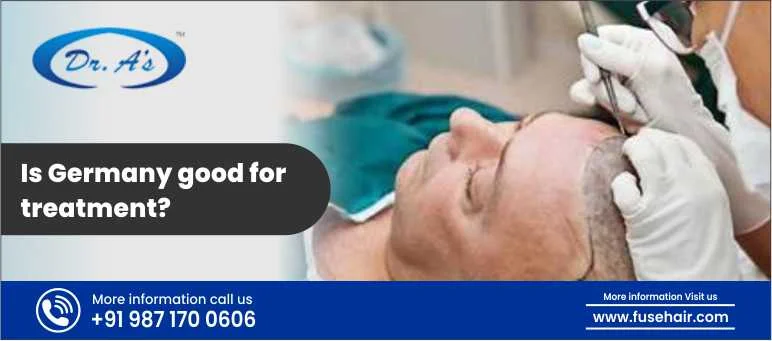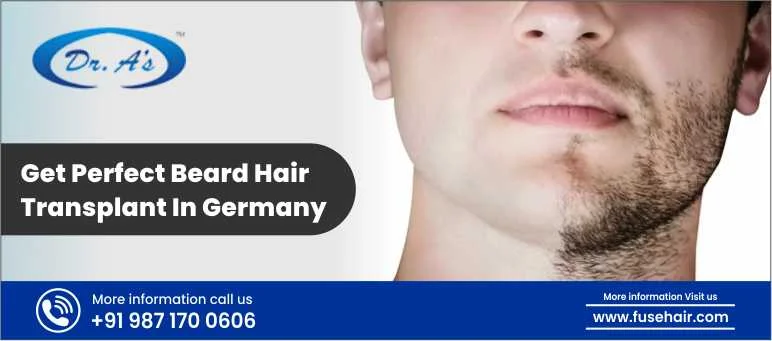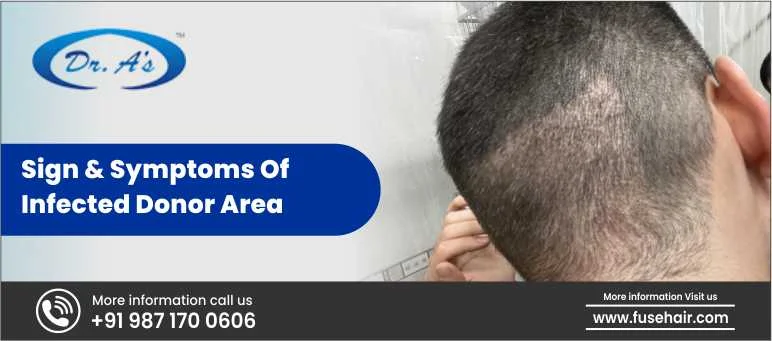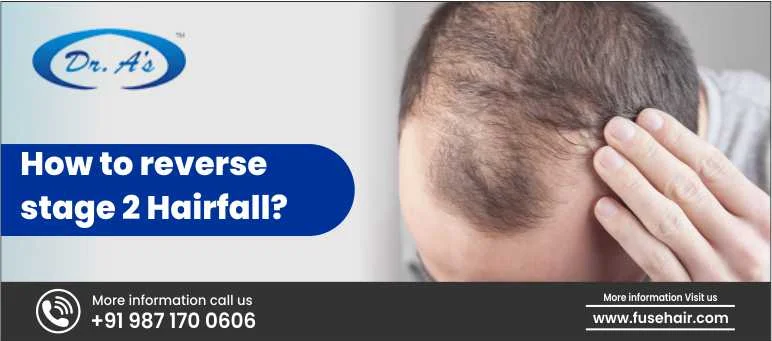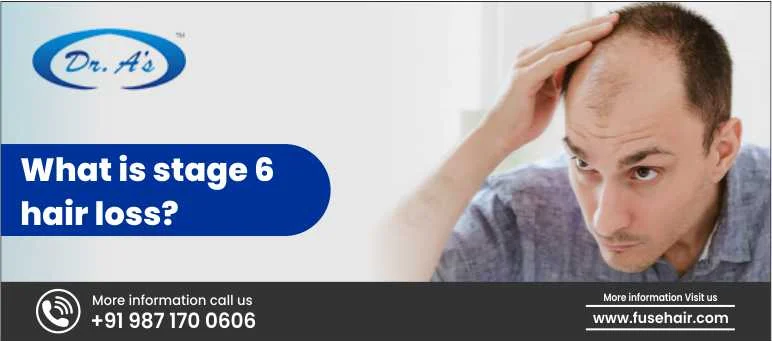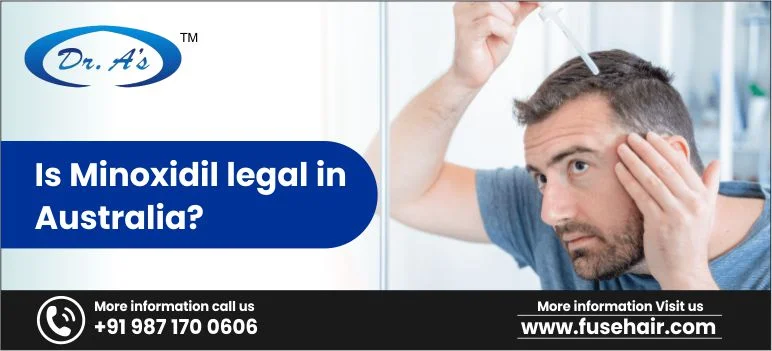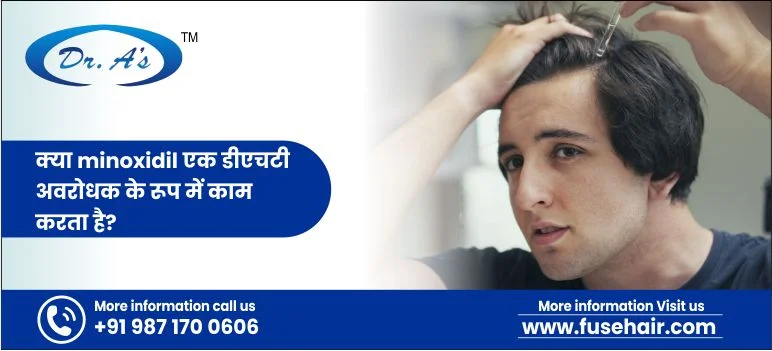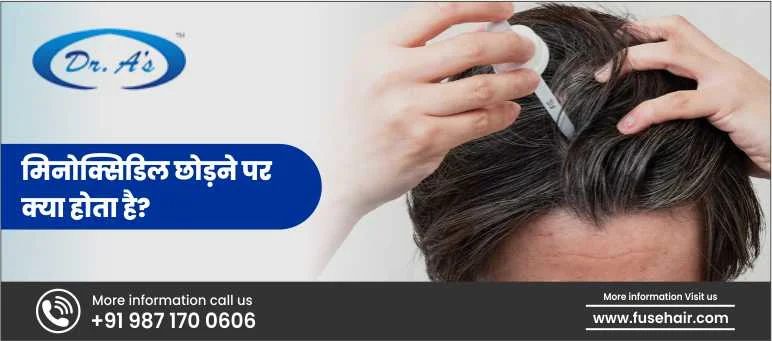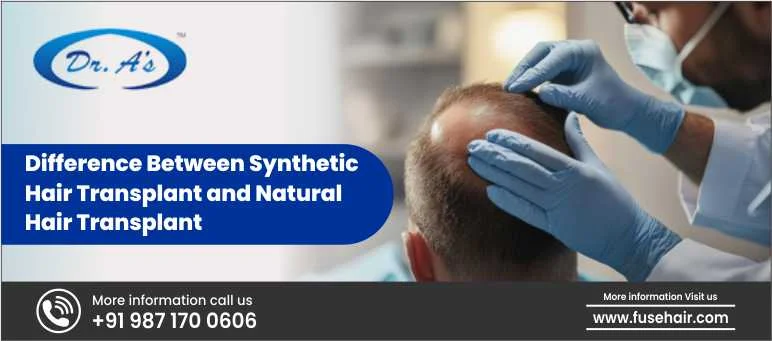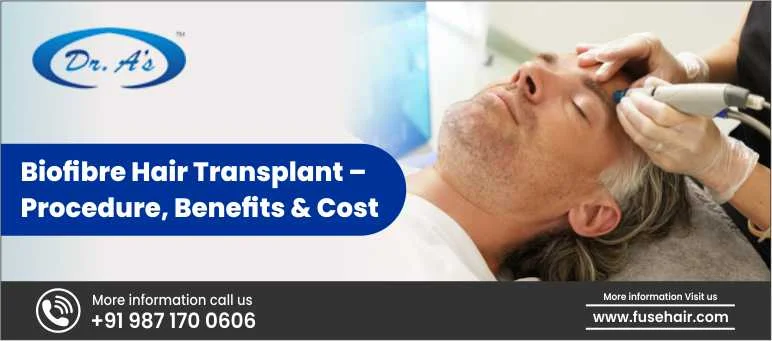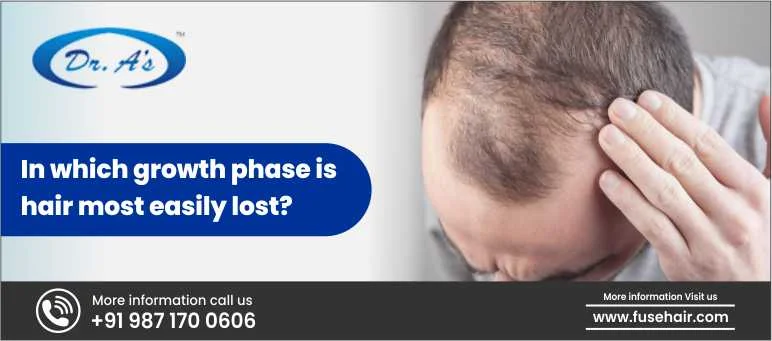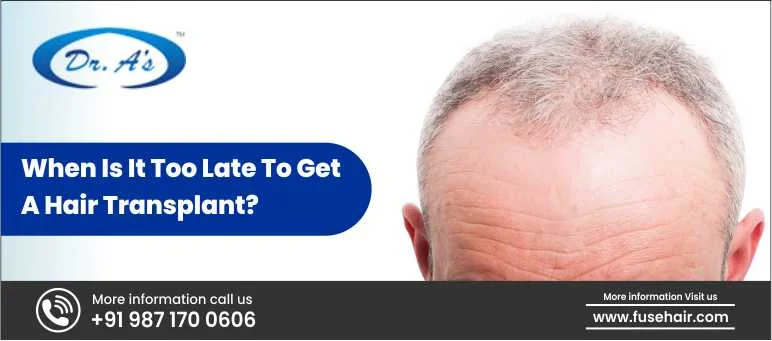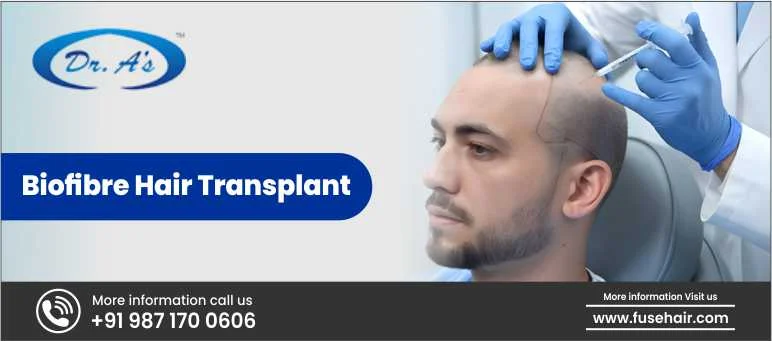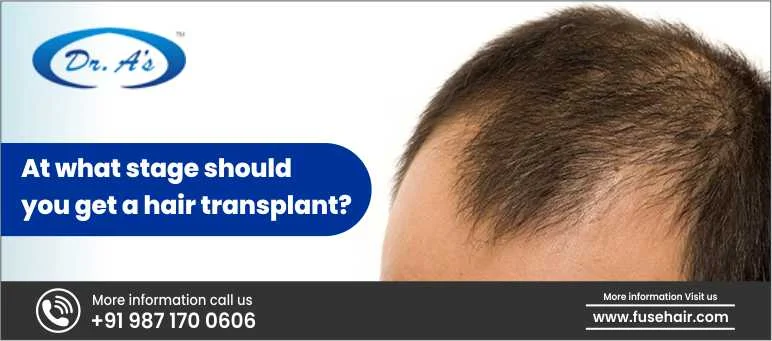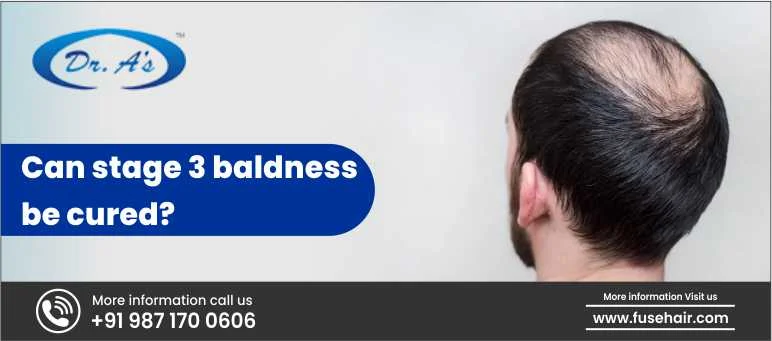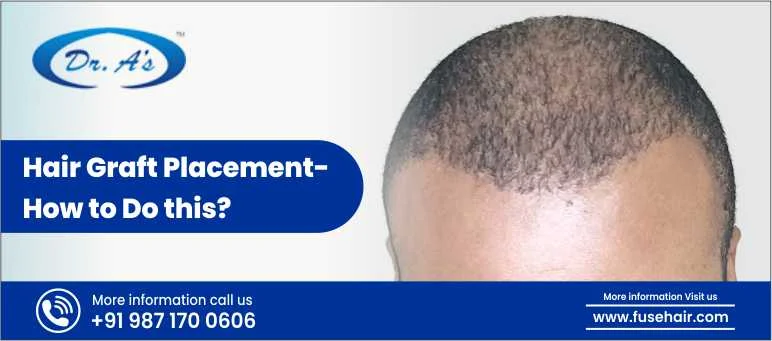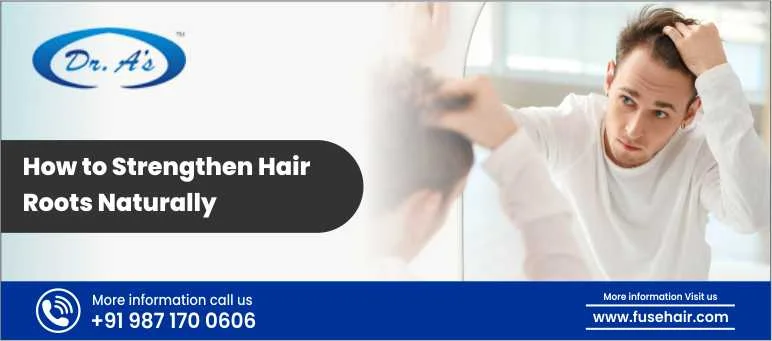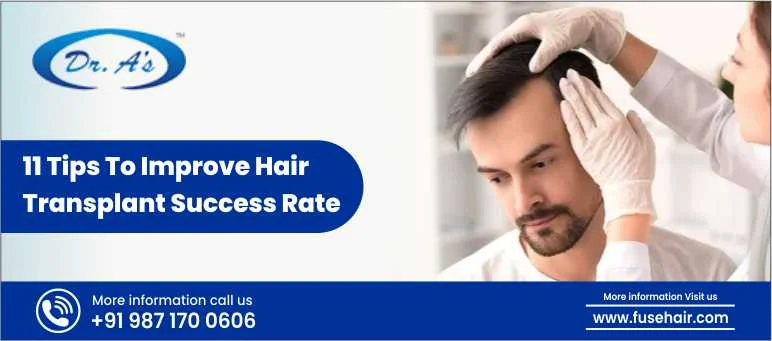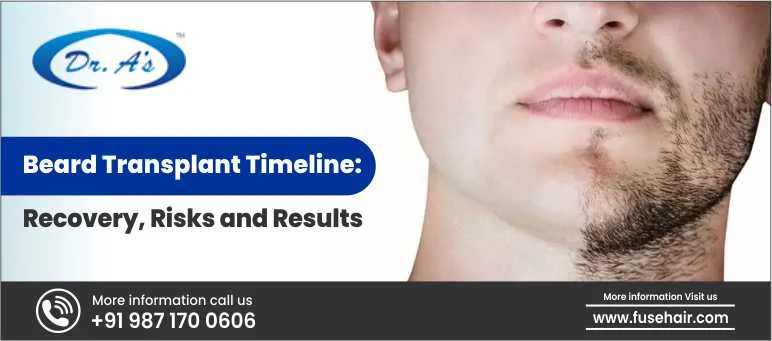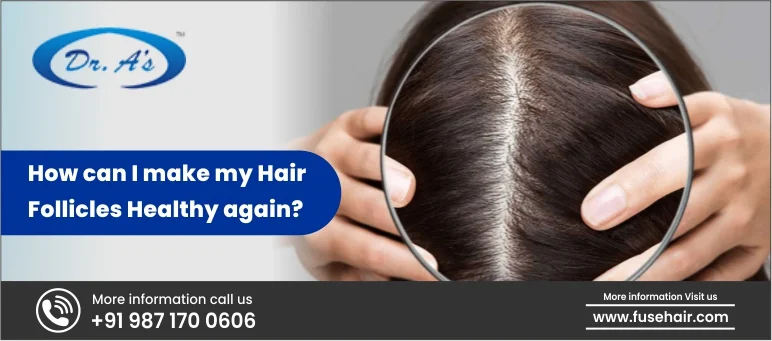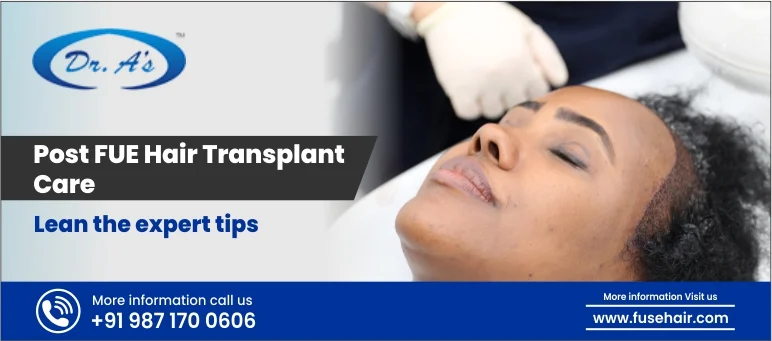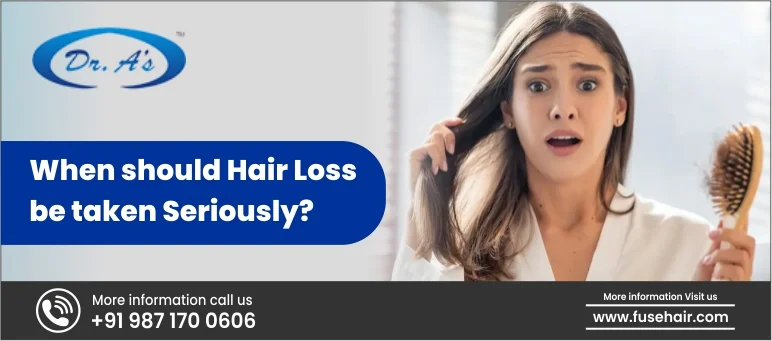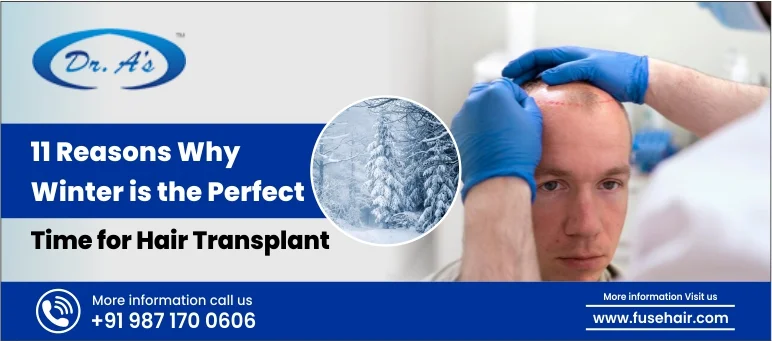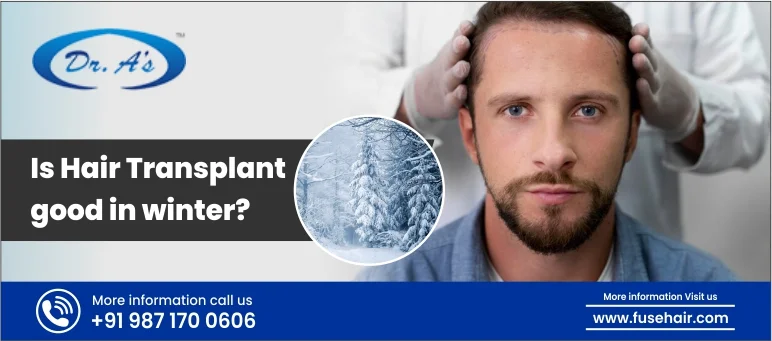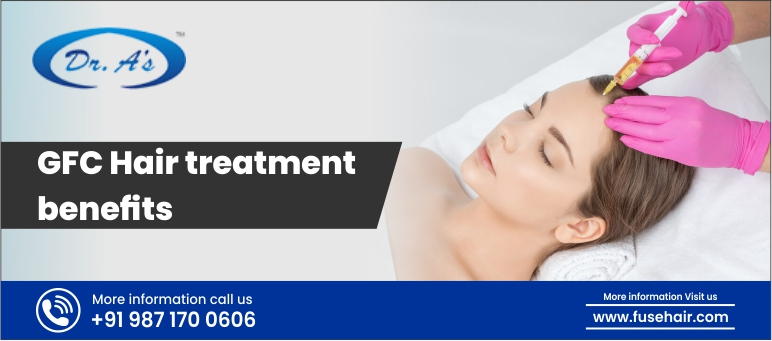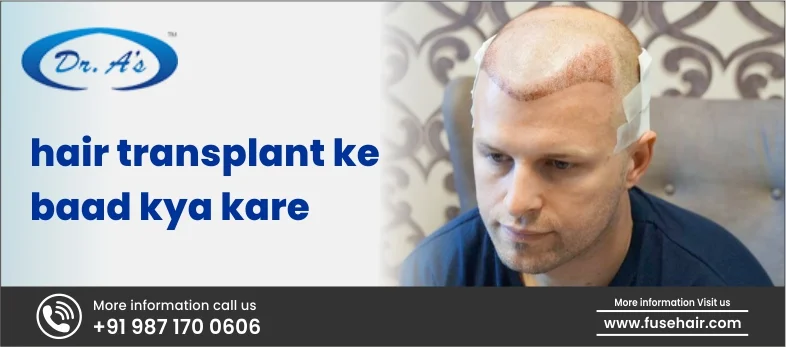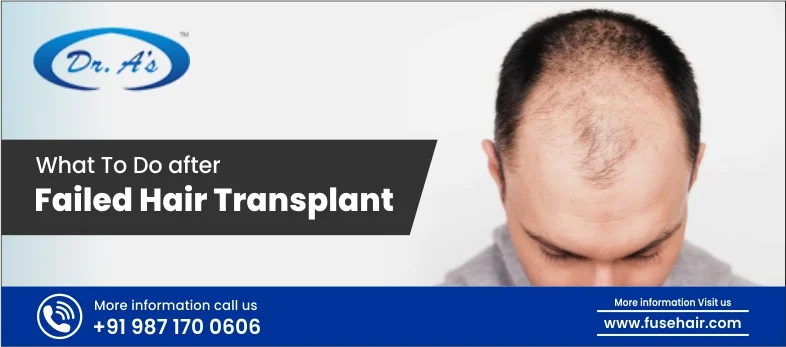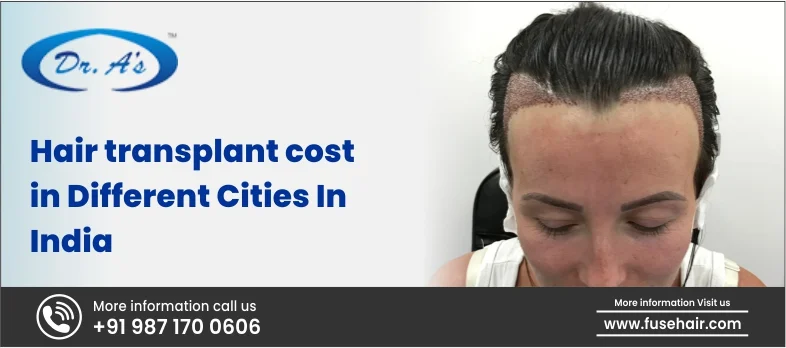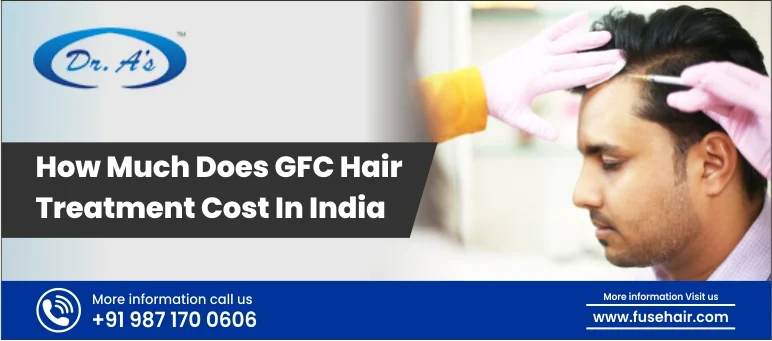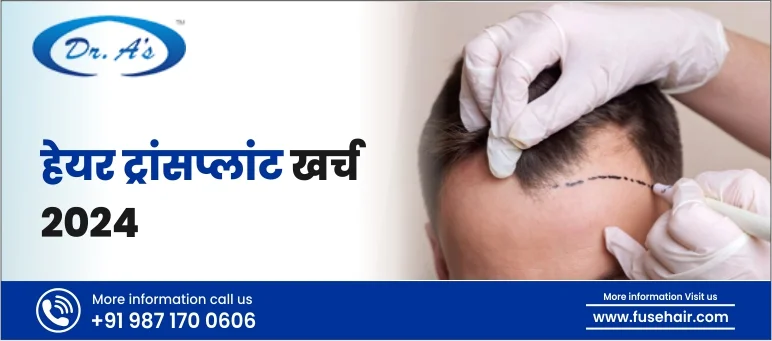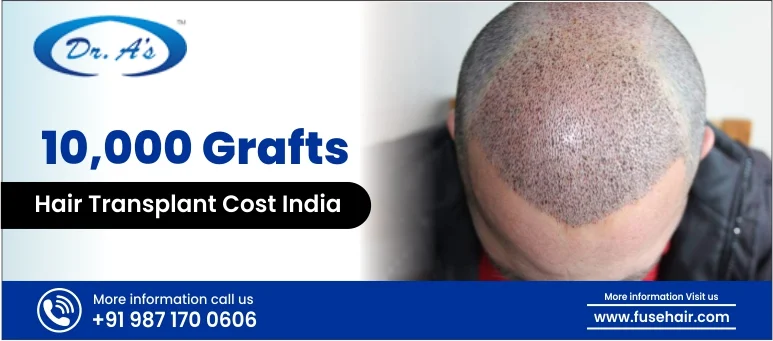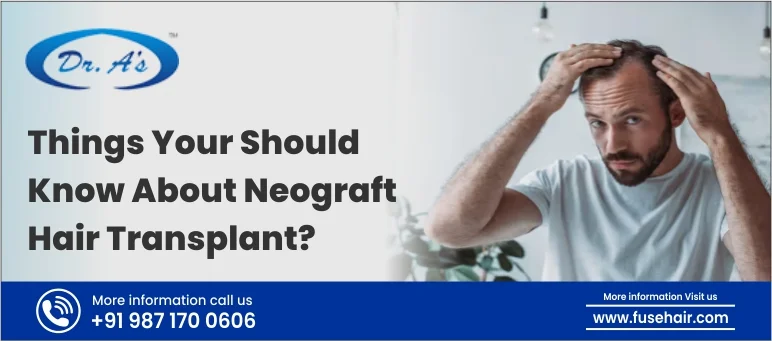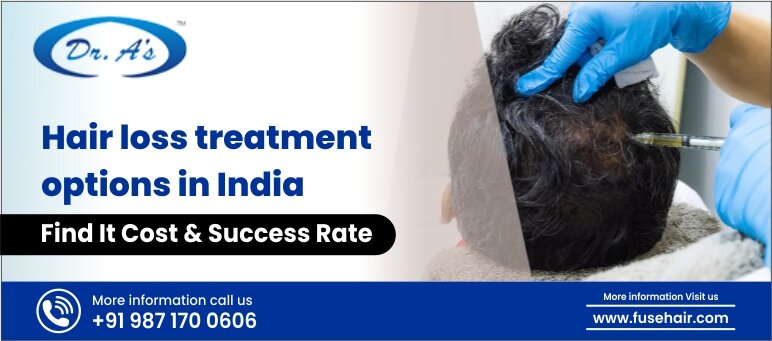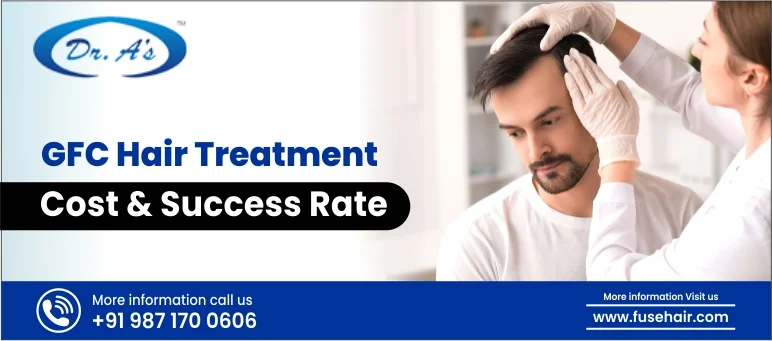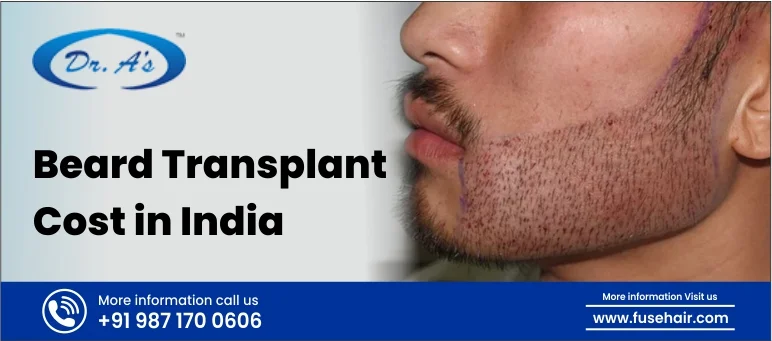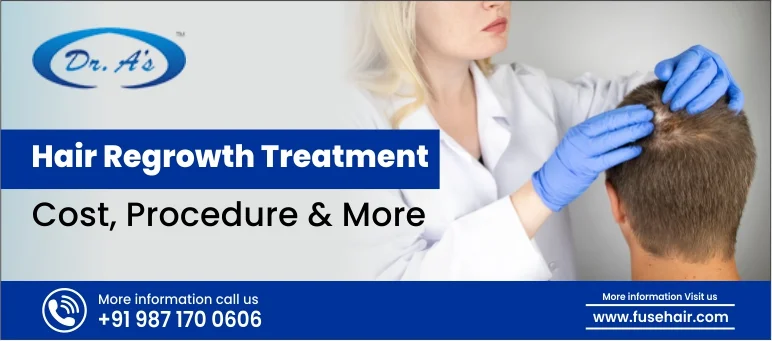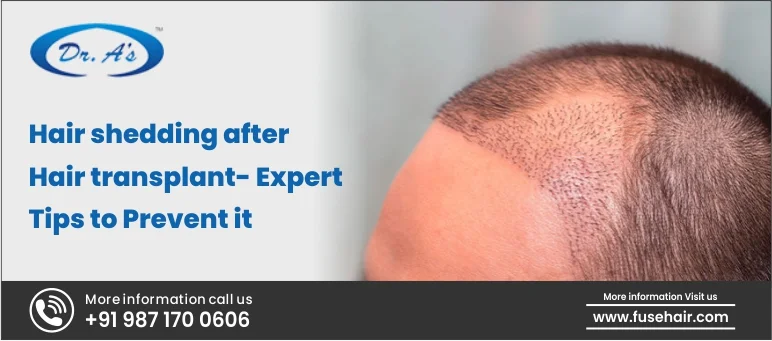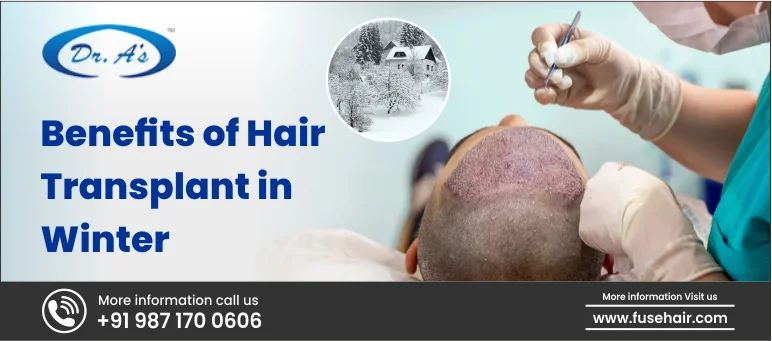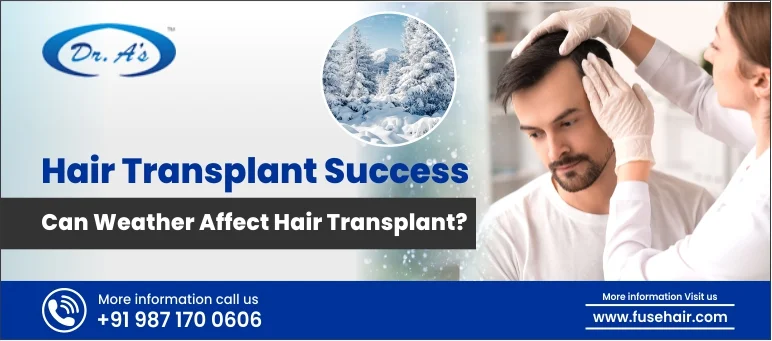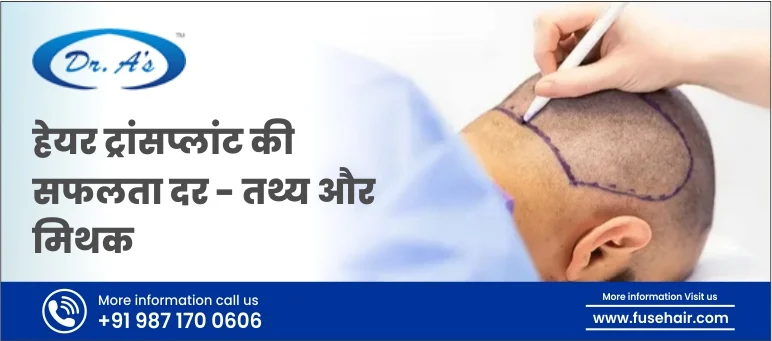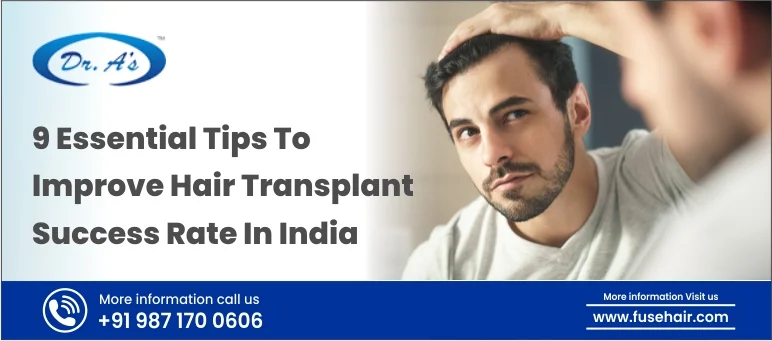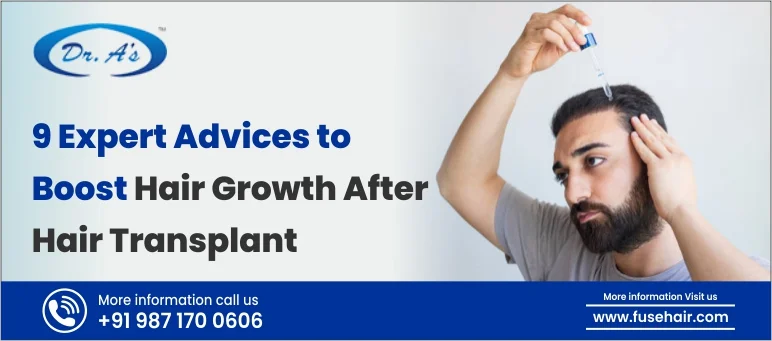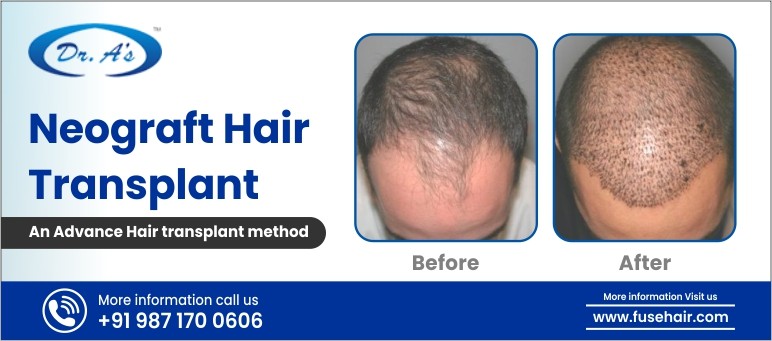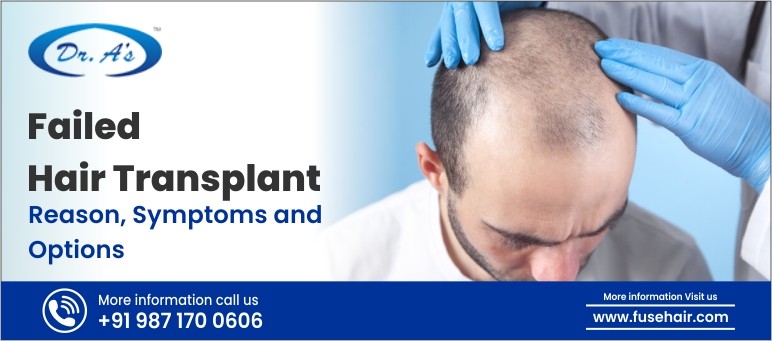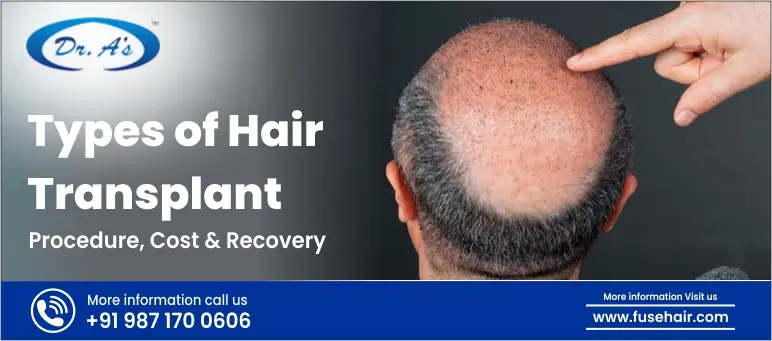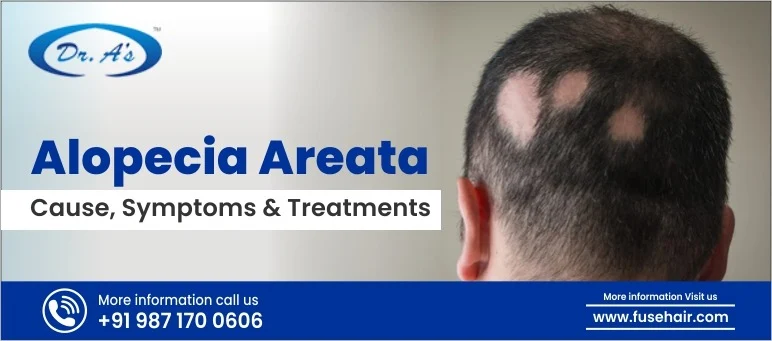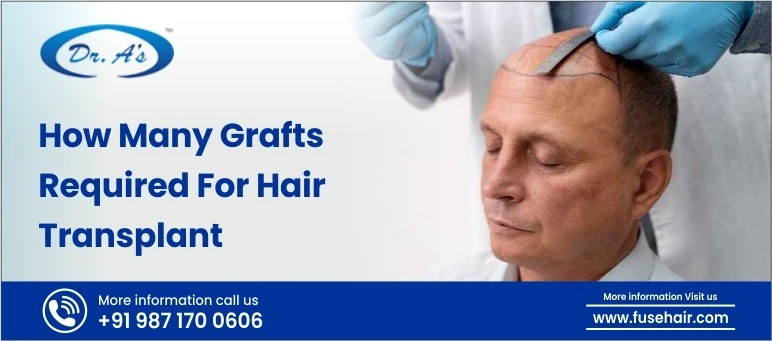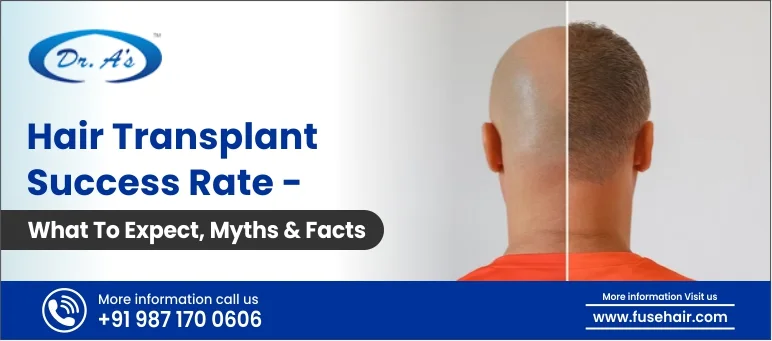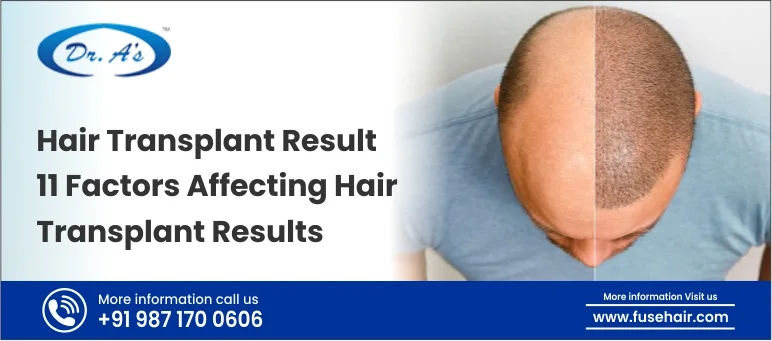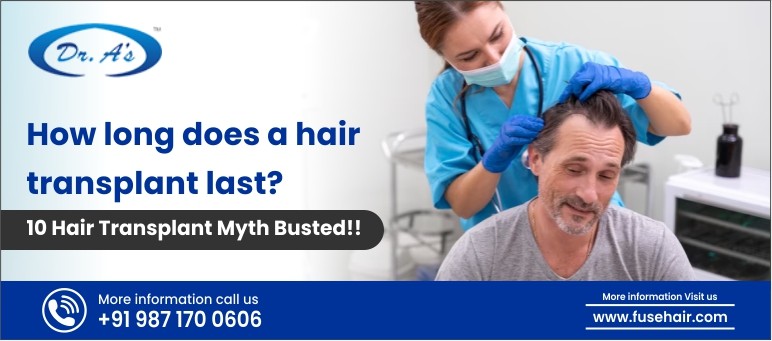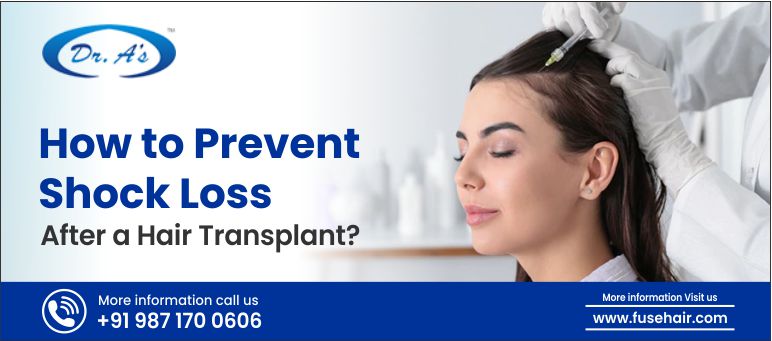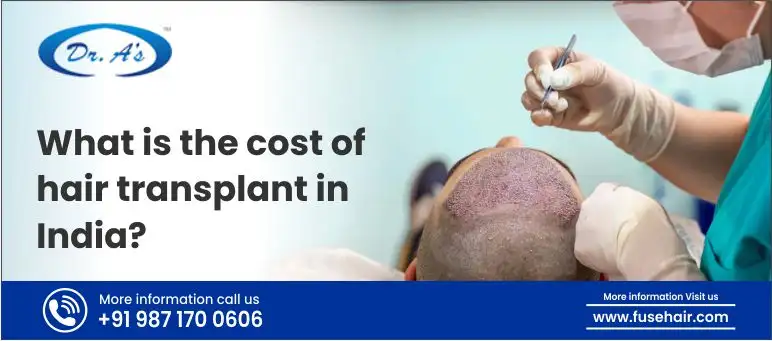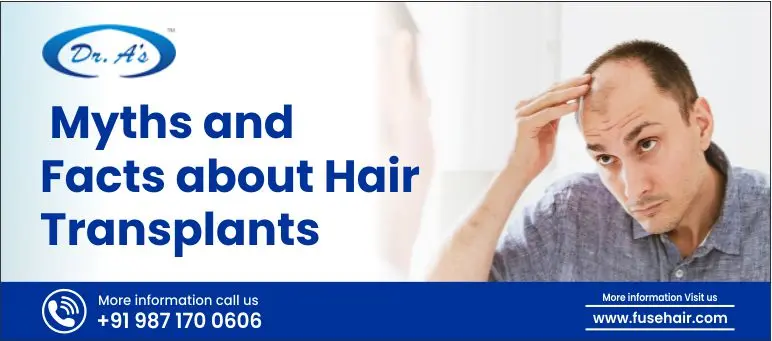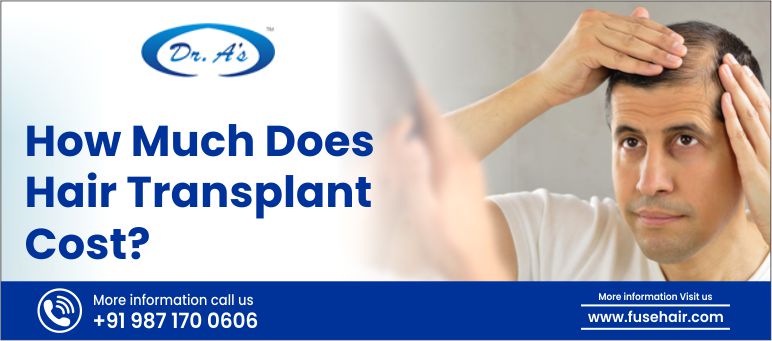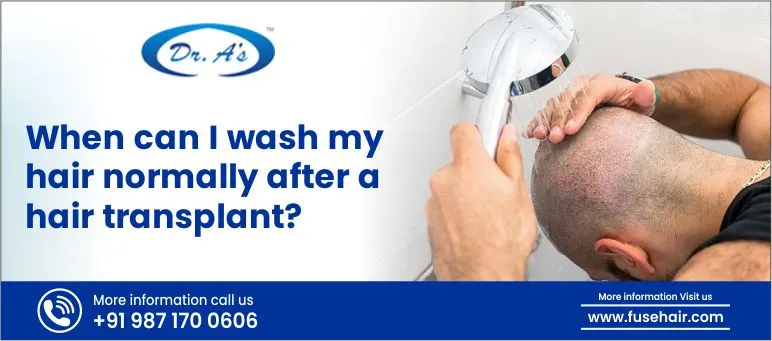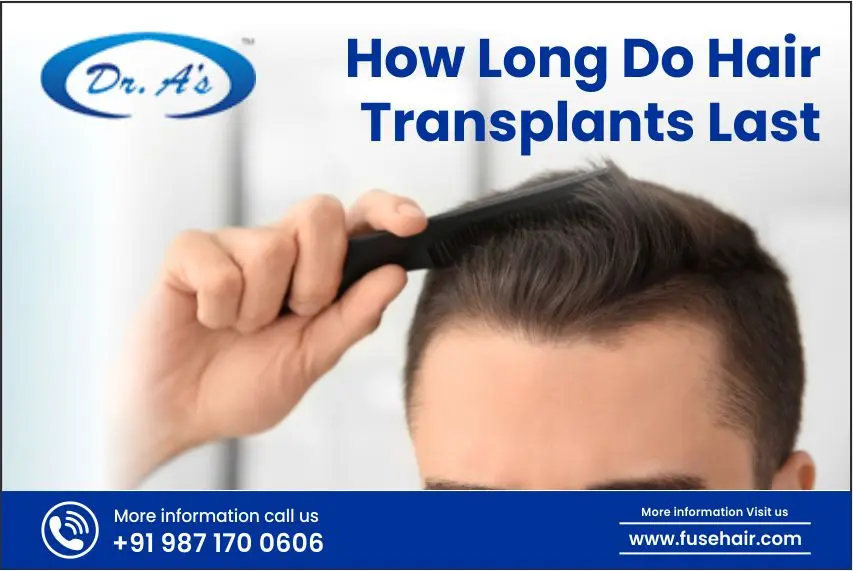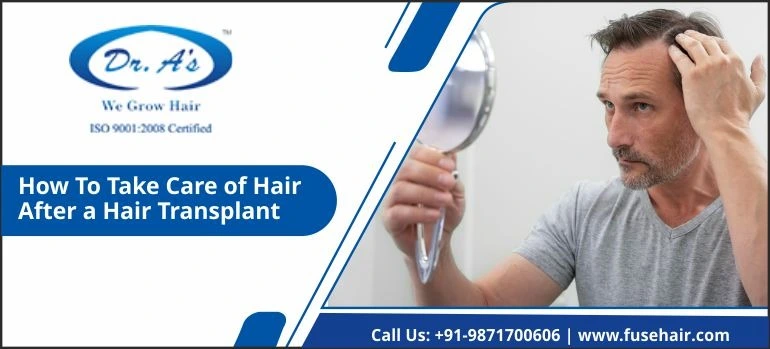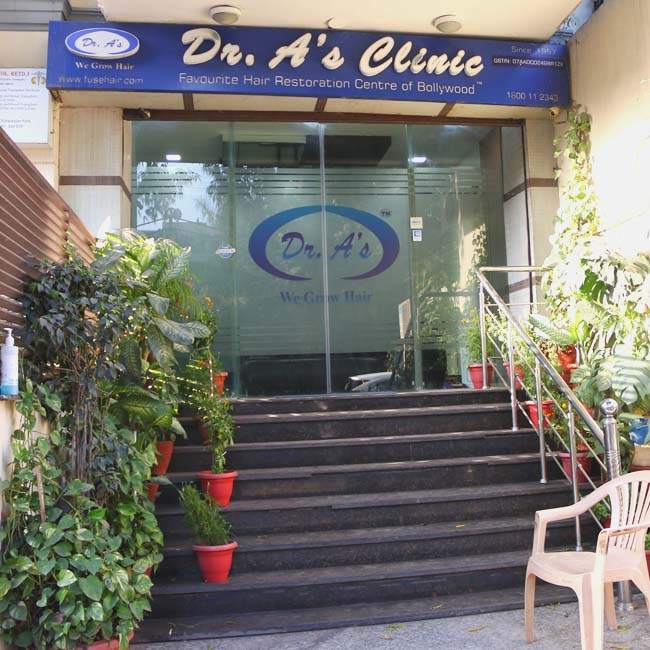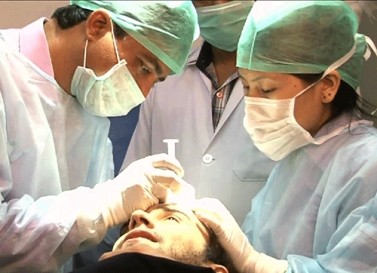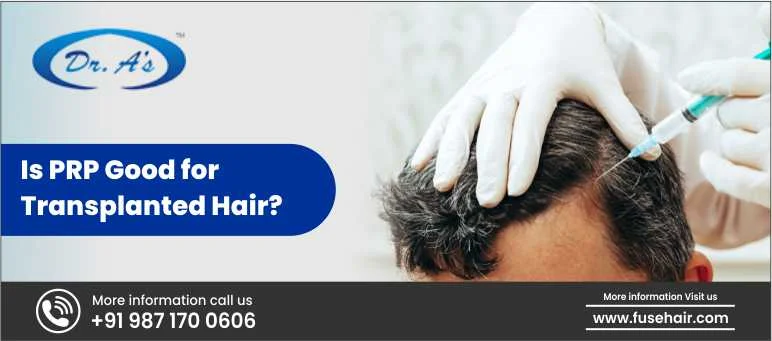
In recent times, most people suffer from hair loss. To get rid of this problem, people prefer various types of hair techniques and surgical methods to acquire healthy hair. There are different hair transplant techniques involved, collecting hair follicles from the donor region and then planting them in the thinning or bald sections.
Most of the techniques are performed in single sessions that last for 3 to 4 hours, whereas complex surgeries can take multiple sessions to execute the treatment perfectly. However, the bruises and scars that occur during the surgical operation require extensive healing. And this is where the PRP treatment comes to the rescue.
Platelet-Rich plasma (PRP) therapy has widened the scope for transplanted hair. It is one of the most promising advancements used in conjunction with hair transplantation for satisfactory results. Led by Dr. Arvind Poswal, we at Dr A’s Clinic provide trusted guidance to all our patients. We leverage advanced techniques of PRP therapy post-hair transplant for effective outcomes.
This article focuses on explaining the efficiency level of PRP therapy for transplanted hair and its scientific background, benefits and potential contribution to ensure better outcomes post-transplant.
Understanding PRP Therapy for Hair
PRP therapy is a hair regenerative treatment, in hair transplantation methodology, regulated by extracting the patient’s blood. This process involves
- Collecting a small amount of blood from the patient
- From platelet-rich plasma blood is extracted
- Concentrated platelets are injected into the scalp, especially around hair follicles
The tissue growth factors and stimulation help in improving hair transplant area healing and maintaining longevity of the hair follicles. These growth factors include:
- Epidermal Growth Factor (EGF)
- Vascular Endothelial Growth Factor (VEGF)
- Platelet-Derived Growth Factor (PDGF)
- Transforming Growth Factor-Beta (TGFB)
- Insulin-Like Growth Factor-1 (ILGF-1)
How Good is PRP for Transplanted Hair?
PRP is an effective and noteworthy treatment to heal hair transplanted regions. The effectiveness of PRP therapy leads to improvement of graft survival, regrowth stimulation and enhancing overall hair quality. There are multiple benefits that prove the PRP therapy is good for transplanted hair.
Some key advantages include boosting graft survival rate, rapid hair growth, and, in the shock phase, minimised shedding (old and damaged hairs are removed from the scalp to boost new healthy hair growth). This is why Dr Arvind Poswal at Dr A’s Clinic diagnoses transplanted hair effects and often recommends PRP therapy for proper healing of the transplanted hair.
Developed Graft Survival Rate
To maintain graft stability after hair transplant, the first few days are important . PRP therapy provides angiogenesis so that a suitable environment for the graft can be provided. It also ensures that the transplanted hair follicles receive adequate blood supply and nutrients. This increases the durability of hair follicles. This therapy helps to improve new vascularisation, which means formation of new blood vessels and thereby improving oxygenation and supplying nutrients to the follicles. In the follicular bulge area, PRP growth factors promote fast cell recovery through stem cell activation.
Reduction in Shedding Post-Transplant
It is widely seen among patients to experience “shock loss” or temporary shedding after hair transplantation. PRP therapy can help minimise this phase by supporting the survival of stressed follicles to stabilise the scalp environment. It minimises inflammation and improves healing by minimising shock loss phenomena. The anti-apoptotic properties of the therapy can protect follicles from any further damage.
Fast vascularisation reduces follicle dormancy period and quickly allows them to resume the growth cycle. In addition to this, studies have shown that patients who underwent PRP therapy during and after hair transplant have early hair growth within 3 months. Whereas, people who did not undergo tests showed results until closer to 6 months. Results can indeed vary based on individual cases; however, collective evidence suggests that PRP enhances both quantity and quality of the hair growth after transplantation.
Fast healing
An immediate effect of PRP post-transplantation is accelerated healing. The PRP growth factors help in repairing tissue, minimising redness, swelling and scabbing at the recipient area. Fast healing can significantly minimise discomfort and downtime among patients. PRP therapy promotes the growth of the platelets to stimulate Fibroblast activity and collagen production, which thereby helps in repairing tissues and regeneration.
Fibroblast cells generate collagen protein to provide skin elasticity, regeneration and repair of damaged or ageing tissues. This smooth and flexible healing process not only minimises discomfort among patients but also ensures a regulated outcome. Therefore, PRP is suitable for patients who are prone to slow or poor healing after transplantation. It is also beneficial for people undergoing shock loss and looking for faster and denser hair growth in transplanted areas.
Increasing Hair Thickness and Quality
Even when hair grafts are successfully planted to the surface of the scalp on the root, certain differences remain between diameter and density of the transplanted hair and native hair. There is a probable existence of thin and weak hair strands among some patients, which take a long time to get thick. PRP therapy enhances papilla cells, important for hair softness.
It increases the production of collagen and keratin around the follicular area, resulting in shinier, thicker and healthier hair. PRP therapy improves the hair thickness and quality by restoring inactive hair follicles to promote new, healthy and regenerated hair. The growth factors from the patient’s blood help to nourish hair follicles, which improves blood supply to the scalp, extending the hair growth stage. It increases hair health with desirable density and thickness.
Native Hair Growth Stimulation
In most cases, hair transplant solely focuses on the hair loss area, but many patients still have surrounding thinning native hair. In this scenario, PRP therapy not only regenerates hair in the affected area, but it also works for weak follicles. It improves the overall scalp environment by increasing blood circulation and minimising inflammation in the scalp.
Diffuse hair thinning patients can benefit from this therapy because it can thicken the existing native hair and potentially minimise the requirement for additional grafts in the future. Therefore, PRP therapy is both for hair transplantation and reviving thinning native hair. At Dr A’s Clinic, Dr. Arvind Poswal conducts PRP therapy in a clean and comfortable environment using FDA-approved instruments and equipment for enhanced patient safety and impactful results.
Lower infection risks
The risk of infection, folliculitis and necrosis of the scalp tissue is one of the complications associated with hair transplant procedures. But PRP therapy has antimicrobial properties that offer protection against infections. The regenerative effect has helped to maintain healthy skin and minimise follicular inflammation risk.
PRP transplant process is safe at Dr A’s clinic under Dr. Arvind Poswal’s observation. The clinic maintains Global standards of hygiene, sterilisation, and patient care. Dr. Arvind Poswal has introduced ISO-certified sterile operating rooms, uses HEPA filters and UV lights. They also maintain a surgical draping protocol where both patients’ and surgeons’ areas are properly draped with sterile sheets to avoid any contamination.
Is PRP suitable for everyone after Hair Transplant?
Indeed, PRP treatment has gained immense success with hair regeneration and transplantation. But still, some people with their medical background need to look into whether this hair therapy is suitable for them or not. People with blood disorders (platelet dysfunction syndrome or thrombocytopenia) are not at all suitable for this therapy.
Apart from this, people suffering from autoimmune diseases like lupus, chronic liver disease and cancer patients should not go for PRP hair transplant. People who are on specific medications like immunosuppressants, high-dose corticosteroids, and blood thinners should not opt for this therapy. There is a high chance that chain smokers and alcoholic individuals will not get proper benefits from the therapy because these habits minimise platelet function and healing, which negatively impact the efficiency of the PRP.
However, you do not need to worry if you visit Dr A’s Clinic, led by Dr Arvind Poswal, because here he recommends PRP therapy after strategic and selective procedures. Specialists in the clinic thoroughly examine a patient’s medical profile before applying the therapy.
In our clinic, both Dr Arvind Poswal and Dr Raghav Poswal collaboratively use high-quality concentrated PRP therapy, advanced technology and combine PRP with FUE to receive optimal hair growth results. Further, they will provide adequate medical attention without affecting your health condition.
The therapy maintains safety by using patients’ blood, reducing the risk of blood transfusion and other allergies. However, there are minor symptoms, such as mild swelling or bruising at the injection region, that will last temporarily. For a while, you can feel minimal tenderness or itching and minor temporary headaches.
Final Thoughts
So, to answer “Is PRP good for transplanted hair?” is yes, it is indeed good for transplanted hair. It enables healing, improves survival of the graft, boosts hair density and enhances overall outcome. PRP is a scientifically proven therapy that has complemented exceptional hair transplantation results. For individuals looking for fast recovery, dense results and long-term maintenance after the transplant, PRP therapy is an effective solution.
You can avail this therapy in Dr A’s Clinic. Our founder, Dr Arvind Poswal, a renowned hair transplant surgeon, often suggests undergoing the PRP therapy for long-term, natural-looking post-hair transplant results.
In our clinic, we ensure high-profile surgical hygiene, advanced sterilisation technology, and proactive patient care to ensure lowering infection risk and fast healing even in complicated hair transplant cases.

